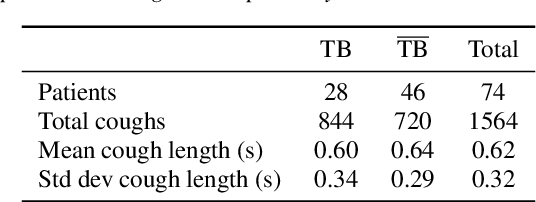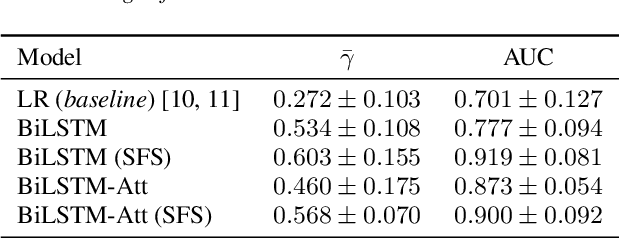TB or not TB? Acoustic cough analysis for tuberculosis classification
Paper and Code
Sep 02, 2022



In this work, we explore recurrent neural network architectures for tuberculosis (TB) cough classification. In contrast to previous unsuccessful attempts to implement deep architectures in this domain, we show that a basic bidirectional long short-term memory network (BiLSTM) can achieve improved performance. In addition, we show that by performing greedy feature selection in conjunction with a newly-proposed attention-based architecture that learns patient invariant features, substantially better generalisation can be achieved compared to a baseline and other considered architectures. Furthermore, this attention mechanism allows an inspection of the temporal regions of the audio signal considered to be important for classification to be performed. Finally, we develop a neural style transfer technique to infer idealised inputs which can subsequently be analysed. We find distinct differences between the idealised power spectra of TB and non-TB coughs, which provide clues about the origin of the features in the audio signal.
 Add to Chrome
Add to Chrome Add to Firefox
Add to Firefox Add to Edge
Add to Edge